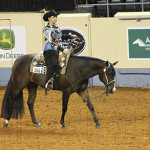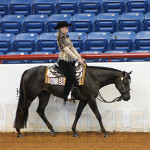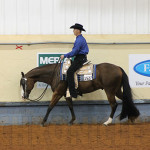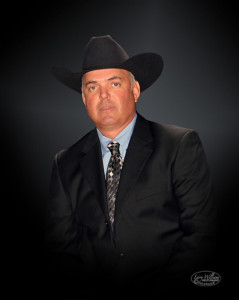Tips With Tivoli: Learn How Western Pleasure is Judged
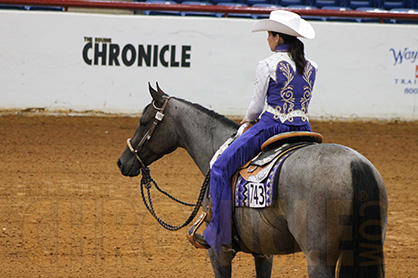 Have you ever watched a Western Pleasure class and wondered how the judges pick the winner? What separates the fourth and seventh place horse? The National Snaffle Bit Association (NSBA), the largest stand-alone association dedicated to the exhibition of Western Pleasure horses, has developed a three-tiered judging hierarchy for evaluating a Western Pleasure horse. Mike Tivoli, a NSBA carded judge, breaks down the three criteria judges use to evaluate a class.
Have you ever watched a Western Pleasure class and wondered how the judges pick the winner? What separates the fourth and seventh place horse? The National Snaffle Bit Association (NSBA), the largest stand-alone association dedicated to the exhibition of Western Pleasure horses, has developed a three-tiered judging hierarchy for evaluating a Western Pleasure horse. Mike Tivoli, a NSBA carded judge, breaks down the three criteria judges use to evaluate a class.
THE THREE CRITERIA
Western Pleasure forms the foundation for all other western performance events. It embodies the ideal “way of going” for a pleasure horse, and, like its name applies, describes a horse that is, first and foremost, a pleasure to ride. NSBA judges use a three tiered approach to evaluating a pleasure horse. The three criteria are judged in order of importance:
1. Correctness
2. Quality
3. Degree of Difficulty
#1. Correctness
The very first thing a judge looks for is correctness. Is the horse performing the required gait in a technically correct manner?
• Four beat walk: The slowest gait of a horse, the walk is a four beat movement in which the horse lifts and places each of its feet individually. The gait should be natural and smooth, without undue hesitation.
• Two beat jog: This gait covers the ground smoothly in a two beat motion, with rear and front diagonal feet hitting the ground simultaneously. The jog should be cadenced and rhythmic.
• Three beat lope: The lope is a three beat gait starting with the rear hind and progressing to the front. The lope is a slower version of the canter, the fastest and most ground covering of a horse’s natural gaits. This gait should be natural and rhythmic is appearance, such that it is smooth and pleasurable to ride.
If any of these gaits are not performed in a consistently correct manner, the judge must move that horse to the bottom of his card. In some cases, if the degree of incorrectness is severe enough, the judge may stop evaluating the horse altogether, making it unnecessary to move on to the next judging criteria, quality.
#2. Quality
Quality describes the style with which the horse performs a gait. The horse should appear graceful and fluid. The judge will evaluate the head carriage and consistency of the horse’s top-line, expression, and the ease at which it moves across the arena. Horses are rewarded for having reach and extension of their legs, a soft footfall, and forward motion while maintaining a correct frame, head carriage, and pleasing expression.
#3. Degree of Difficulty
If a horse satisfies the first two criteria, the judge then moves on to determine the degree of difficulty with which the horse is performing the gaits compared to the other horses in the class. It is important to note that the slowest horse isn’t necessarily the winner if it is has no correctness or quality in its movement.
The speed of the horse only comes into play if the horse is moving correctly and with quality. A horse that can maintain a consistent, slow, rhythmic gait that flows across the arena is displaying a higher degree of difficulty than a horse that speeds up and slows down, falls out of frame, or must speed his legs to stay comfortable. Ideally, a horse capable of a high degree of difficulty will move with beautiful extension, full engagement of its hind end, and maintain self-carriage such that the rider does not have to lift his hand or make noticeable adjustments to the horse during the class.
NEXT TIME YOU ARE IN THE RING
It is often difficult to evaluate your own ride. The judge may see things that you don’t. Video can be an invaluable tool for not only helping you critique your own ride, but also to understand the overall placing of the class. Have a friend video not only you, but the other riders as well. Pretend you are the judge and use the three criteria to judge the class. This will give you a better understanding of how to improve your ride with the goal of bringing out the best in your horse.
TAKE AWAY MESSAGE
Understanding the judging hierarchy demystifies how a Western Pleasure class should be judged. It gives both the judge and the exhibitor a qualitative framework to evaluate a horse’s performance.










